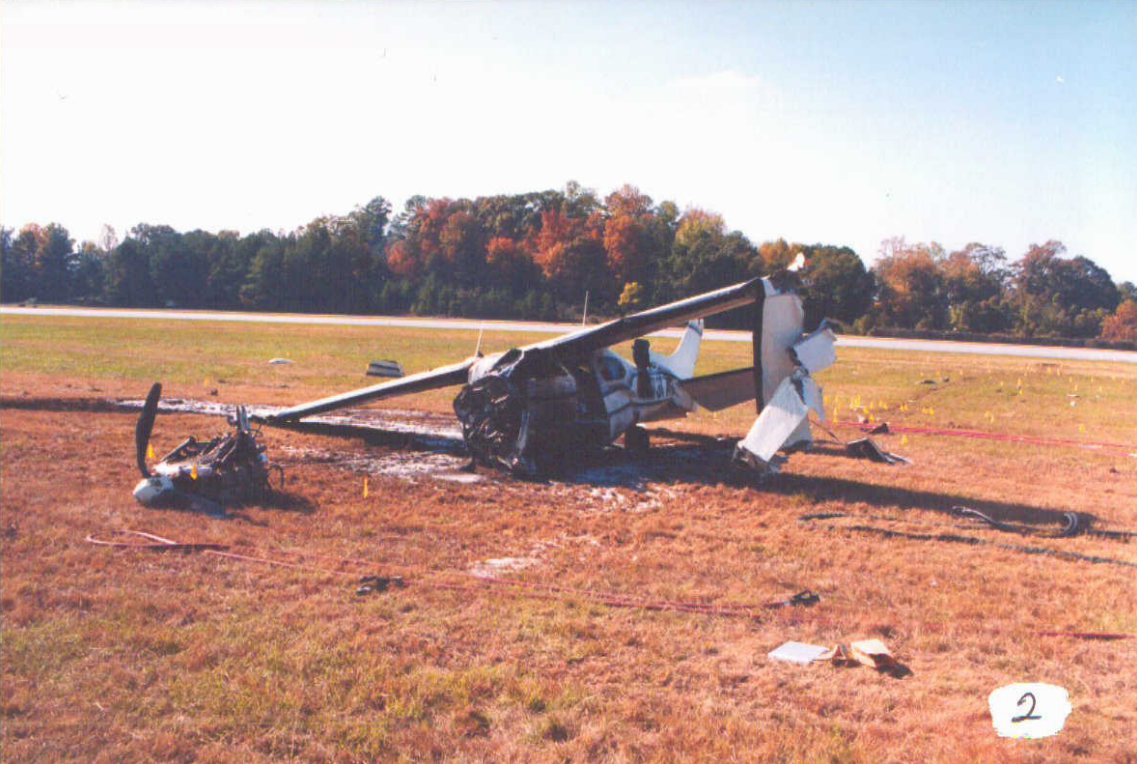
ASN Wikibase Occurrence # 41621
This information is added by users of ASN. Neither ASN nor the Flight Safety Foundation are responsible for the completeness or correctness of this information.
If you feel this information is incomplete or incorrect, you can submit corrected information.
| Date: | Sunday 7 November 1999 |
| Time: | 10:54 |
| Type: |  Cessna 210N Centurion |
| Owner/operator: | Skyclub Inc |
| Registration: | N7317A |
| MSN: | 21063560 |
| Year of manufacture: | 1979 |
| Total airframe hrs: | 5205 hours |
| Engine model: | Continental IO-520-A |
| Fatalities: | Fatalities: 1 / Occupants: 1 |
| Aircraft damage: | Destroyed |
| Category: | Accident |
| Location: | Dekalb-Peachtree Airport (PDK/KPDK), Chamblee, GA -
 United States of America United States of America
|
| Phase: | Landing |
| Nature: | Private |
| Departure airport: | Dekalb-Peachtree Airport, GA (PDK/KPDK) |
| Investigating agency: | NTSB |
| Confidence Rating: |
On November 7, 1999, at 1054 eastern standard time, a Cessna 210N, N7317A, collided with the ground and burst into flames while maneuvering for an emergency landing at the Dekalb-Peachtree Airport (PDK), in Chamblee, Georgia. The personal flight was operated by the pilot under the provisions of Title 14 CFR Part 91 with no flight plan filed. Visual weather conditions prevailed at the time of the accident. The airplane was destroyed, and the private pilot was fatally injured.
The flight departed Dekalb-Peachtree Airport, moments later the pilot radioed that the airplane had a landing gear problem, and there was smoke in the cockpit. The pilot was instructed to enter visual traffic for runway 2R. Once the airplane was in the traffic pattern, the controller told the pilot that it appeared that the landing gear was extended, and cleared the flight to land. As the airplane neared touchdown the controller told the pilot that the landing gear was not locked and instructed the pilot to go-around. As the airplane flew by the control tower, smoke was seen coming from the airplane. As the pilot maneuvered the airplane for a landing on runway 27, the pilot was again instructed to go-around. Seconds later, the airplane touched down in a grassy area between the approach ends of runways 2L and 2R. Examination of the airplane disclosed that the airplane had sustained extensive fire damage to the floor area beneath the pilot's seat. The examination revealed that a flex hydraulic fluid supply line was missing, and there had been electrical arcing in the immediate vicinity of the hot spot.
Probable Cause: The failure of the flex hydraulic line and the chaffing of an electrical line under the pilot seat that resulted in an inflight fire. The pilot's inflight decision to continue flight with a known airplane deficiencies.
Accident investigation:
 |
|
Sources:
NTSB: https://www.ntsb.gov/_layouts/ntsb.aviation/brief.aspx?ev_id=20001212X20065&key=1
Images:


Photos: NTSB
Revision history:
| Date/time | Contributor | Updates |
|---|---|---|
| 24-Oct-2008 10:30 | ASN archive | Added |
| 21-Dec-2016 19:24 | ASN Update Bot | Updated [Time, Damage, Category, Investigating agency] |
| 14-Dec-2017 09:48 | ASN Update Bot | Updated [Operator, Departure airport, Source, Narrative] |
| 12-Oct-2022 06:01 | Captain Adam | Updated [Aircraft type, Operator, Location, Departure airport, Narrative, Category, Accident report, Photo] |
| 12-Oct-2022 06:02 | Captain Adam | Updated [Photo] |
Corrections or additions? ... Edit this accident description
The Aviation Safety Network is an exclusive service provided by:


 ©2024 Flight Safety Foundation
©2024 Flight Safety Foundation